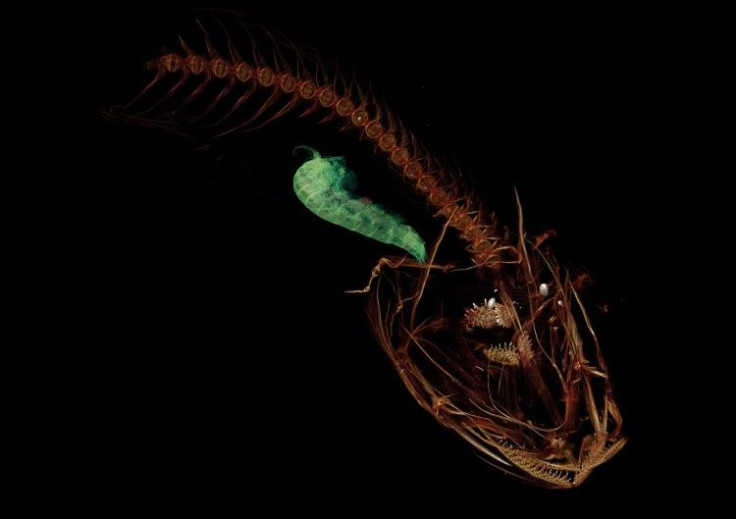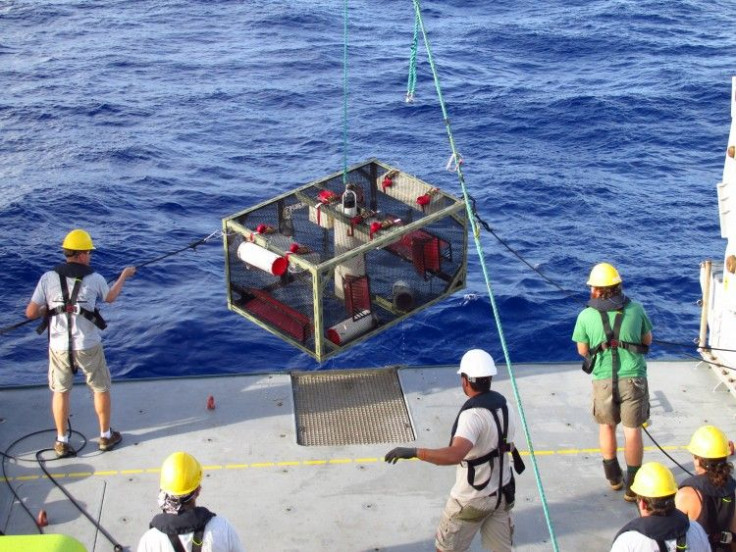Deepest Fish Ever: Mariana Snailfish Caught At Depth Of 8,000 Meters

The world is filled with weird creatures. We are still in the process of exploring several ecosystems, which was not possible in the past because of technological restrictions. The depths of the ocean have always been a mystery and the dark eerie parts that lie thousands of feet below the surface pose very harsh conditions because of high pressure and lack of light penetration, making it hard for life to exist.
But, in the past few decades we have reached deeper than ever before. By doing so, we have encountered some of the most bizarre creatures ever. From the straight-out-of-a-Stephen King-book goblin shark to giant isopod, angler fish, viperfish and ghost sharks, deep sea creatures are all kinds of bizarre.

Now, scientists have finally discovered the deepest fish in the ocean and I bet the image you form in your head is completely wrong. A new species named the Mariana snailfish was discovered by an international team of researchers.
The Mariana snailfish (Pseudoliparis swirei) thrives at staggering depths of up to about 8,000 meters, making it the deepest living creature yet. It was found along the Mariana Trench near Guam.
The Mariana Trench, located in the Western Pacific ocean, has the Challenger Deep, which is the deepest recorded place on Earth at 11,034 meters.
Instead of a mouth full of hypodermic teeth or a bizarrely large skull with no eye sockets, the snailfish is a small, translucent fish that has no scales. Compared to the other menacing creatures, it looks rather tame.
The most accurate description would be that it looks like a giant sperm swimming around in the depths of the Mariana trench.
"This is the deepest fish that's been collected from the ocean floor, and we're very excited to have an official name," said lead author Mackenzie Gerringer, a postdoctoral researcher at the University of Washington's Friday Harbor Laboratories, in a press release. "They don't look very robust or strong for living in such an extreme environment, but they are extremely successful."
The pressure these creatures face at such great depths is staggering. They live in clusters and feed on tiny crustaceans and shrimps. Their mouths do not have teeth that can be used as a suction to gulp prey. According to the release, little is known about how these fish can live under intense water pressure, which can be compared to that of an elephant standing on your thumb.
Snailfish are found at many different depths in marine waters around the world, including off the Coast of San Juan Island, where Gerringer is continuing research on the family of fish.
A research team from Japan has recorded footage of the fish swimming at depths of 8,134 meters (26,686 feet), the deepest sighting so far.
"Snailfishes have adapted to go deeper than other fish and can live in the deep trenches. Here they are free of predators, and the funnel shape of the trench means there's much more food," said co-author Thomas Linley of Newcastle University. "There are lots of invertebrate prey and the snailfish are the top predator. They are active and look very well-fed."

The fish was caught using traps with cameras down at the bottom of the trench. It can take up to four hours for a trap to sink to the bottom.
The team waited an additional 24 hours and then sent an acoustic signal to the trap, which then released the weights attached and it floated back to the surface. This method allowed the scientists to catch fish specimens and take video footage of life at the bottom of the ocean.
"There are a lot of surprises waiting," Gerringer said. "It's amazing to see what lives there. We think of it as a harsh environment because it's extreme for us, but there's a whole group of organisms that are very happy down there."
The research was conducted by a team from University of Washington and published in journal Zootaxa.
In the narrated video, a member of the research team comments on the find, "Nobody on Earth has seen this fish before," talking about the depth at which it was found.
This adds to the excitement of such a find in an unexplored region. Snailfish are found across the world. In-fact, they are the most widespread fish in the world and exist at all levels of the ocean's depth.
© Copyright IBTimes 2024. All rights reserved.











